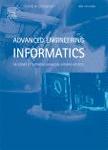版权所有:内蒙古大学图书馆 技术提供:维普资讯• 智图
内蒙古自治区呼和浩特市赛罕区大学西街235号 邮编: 010021

作者机构:Tsinghua Univ Dept Civil Engn Key Lab Civil Engn Safety & Durabil China Educ Minist Beijing 100084 Peoples R China Griffith Univ Sch Engn & Built Environm Gold Coast Campus Brisbane Qld 4222 Australia
出 版 物:《ADVANCED ENGINEERING INFORMATICS》 (Adv. Eng. Inf.)
年 卷 期:2025年第65卷
核心收录:
学科分类:08[工学] 0812[工学-计算机科学与技术(可授工学、理学学位)]
基 金:National Natural Science Foundation of China Tencent Foundation through the XPLORER PRIZE
主 题:Surrogate-assisted evolutionary algorithm Graph neural network Optimization design Shear-wall structure Expensive optimization problem
摘 要:When solving expensive optimization problems (EOPs), e.g., optimization design of shear-wall structures, conventional evolutionary algorithms (EAs) face a challenge of elevated costs related to fitness evaluation. On the other hand, surrogate-assisted evolutionary algorithms (SAEAs) can effectively reduce evaluation costs and are therefore widely used. However, when encountering new structure cases to be optimized, existing SAEAs require the effort of establishing datasets and training machine-learning surrogate models from scratch, which significantly lowers their efficiency. To address this issue, a novel graph neural network (GNN)-assisted evolutionary algorithm (GAEA) is proposed, which features a distinct framework and workflow from existing SAEAs. Then, a powerful GNN surrogate model is proposed, which is based on graph representations and exhibits good generalization abilities. After being trained on a large number of cases of the same type, the model can be applied to various new cases of that particular type. By integrating GNN with EA, GAEA can directly use the trained GNN surrogate model for fitness evaluation when dealing with new structure cases. Furthermore, a distance-based evaluation and updating strategy of surrogate models is innovatively proposed, which can efficiently correct the prediction error of GNN without retraining the model. The proposed GAEA is applied to the optimization design of reinforced concrete (RC) shear-wall structures, which is a typical EOP in the field of structural engineering. Numerical experiments show that: 1) for the same number of fitness evaluations, GAEA can achieve 64.4 % to 92.5 % of the optimization outcomes of typical EA or SAEA, respectively, with only 2.8 % to 33.2 % of their computational time;2) for the same optimization duration (10 min, 45 min, and 120 min), GAEA s optimization outcomes are superior to those of typical EA and SAEA, meeting the rapid optimization demands for shear-wall structures in the schem